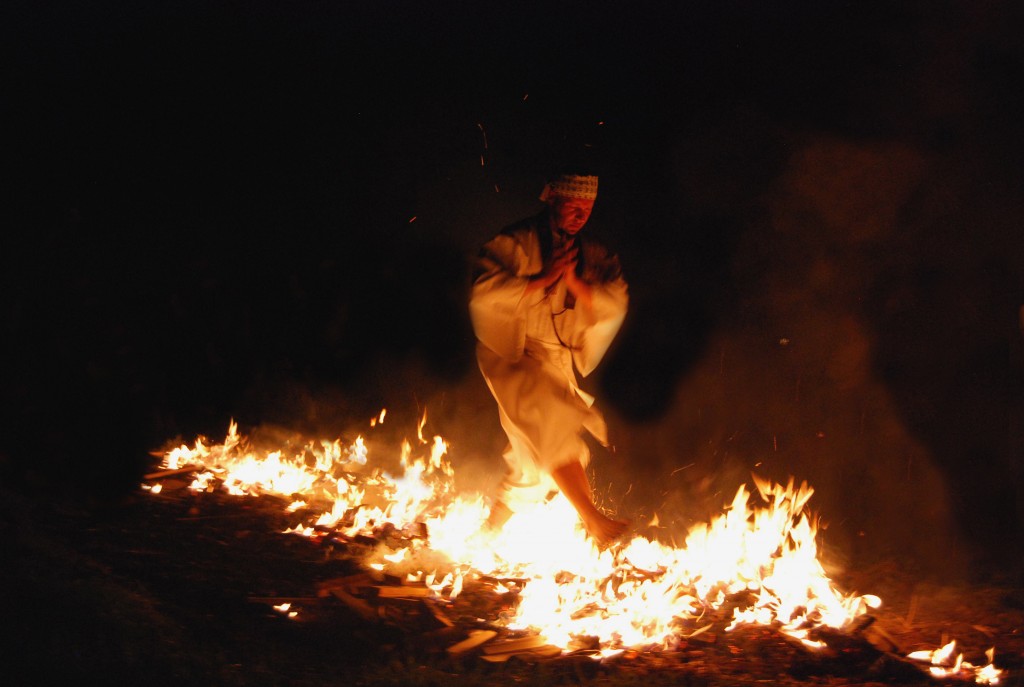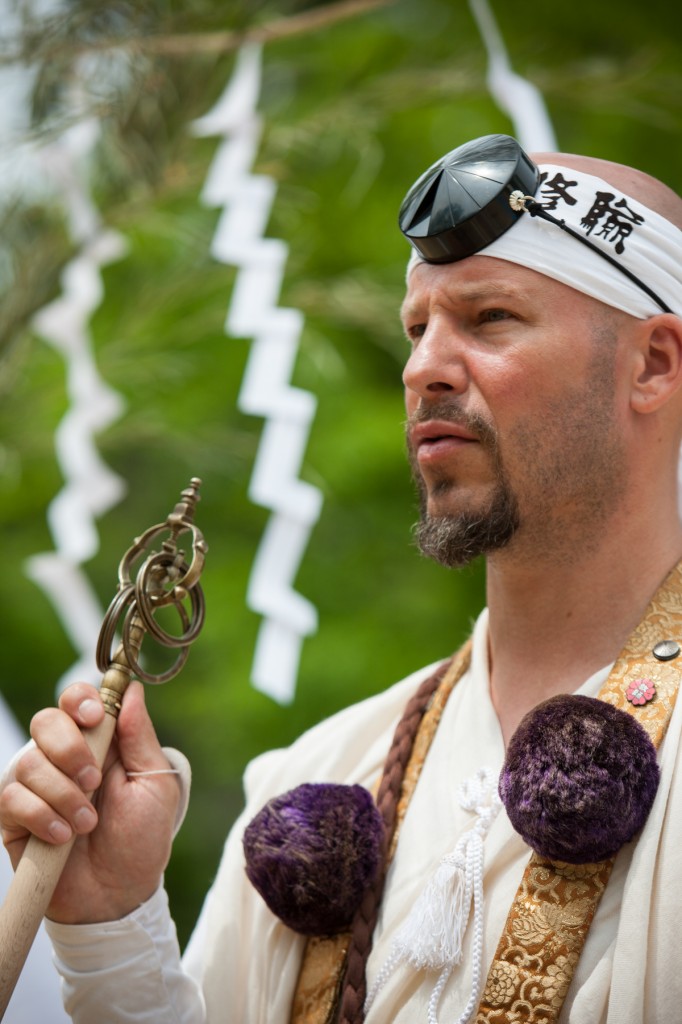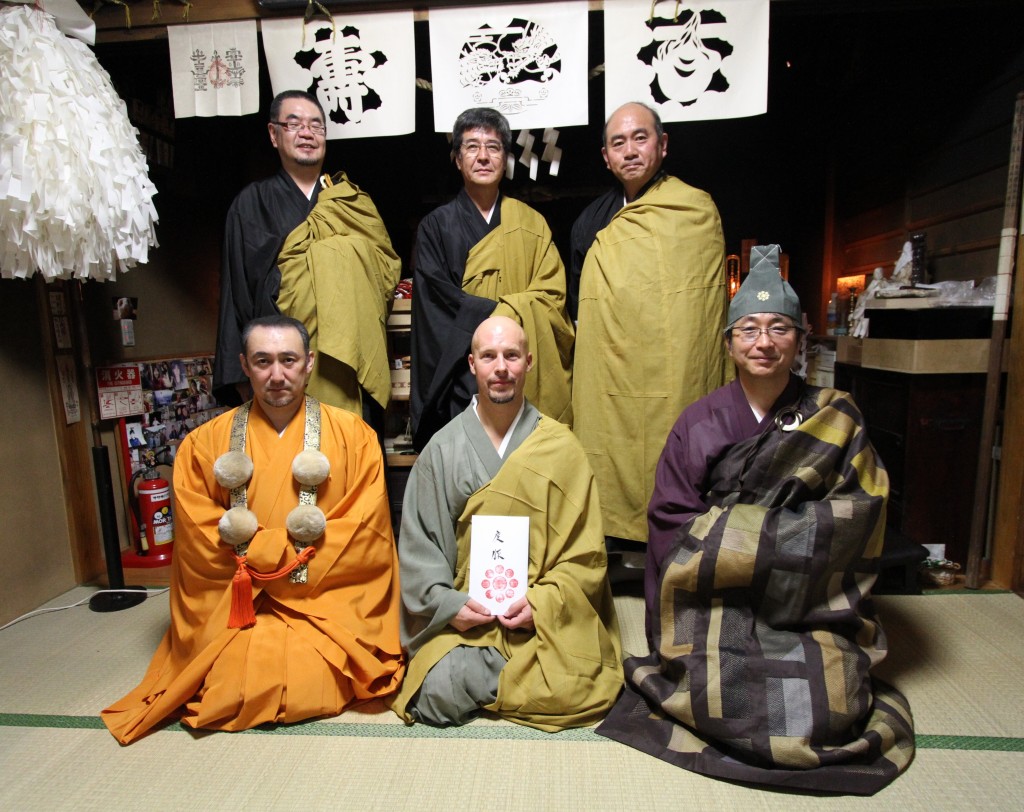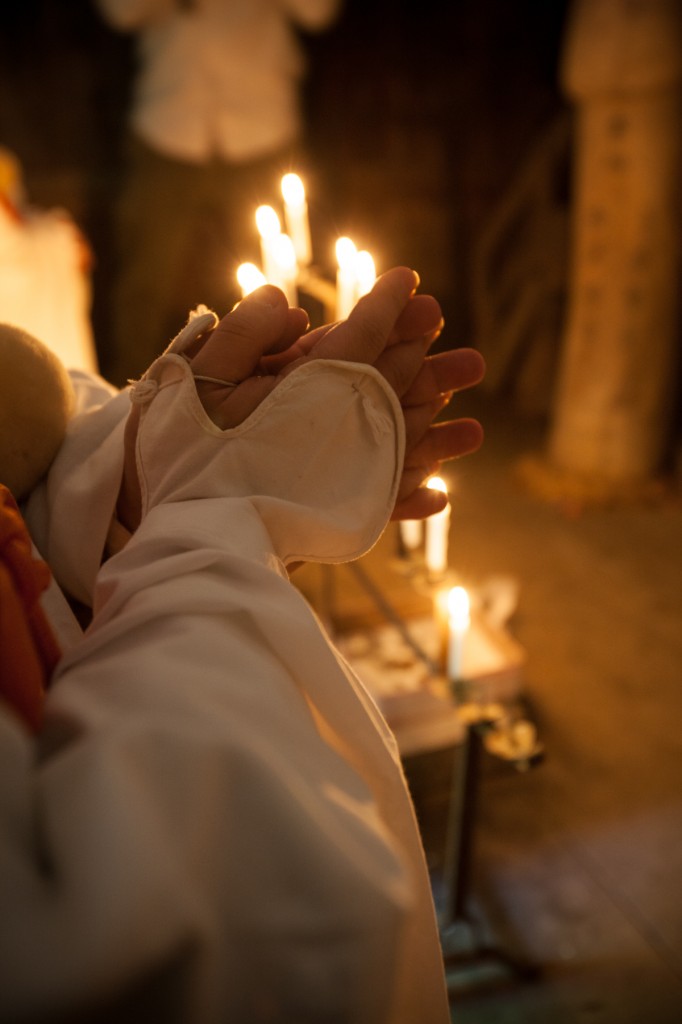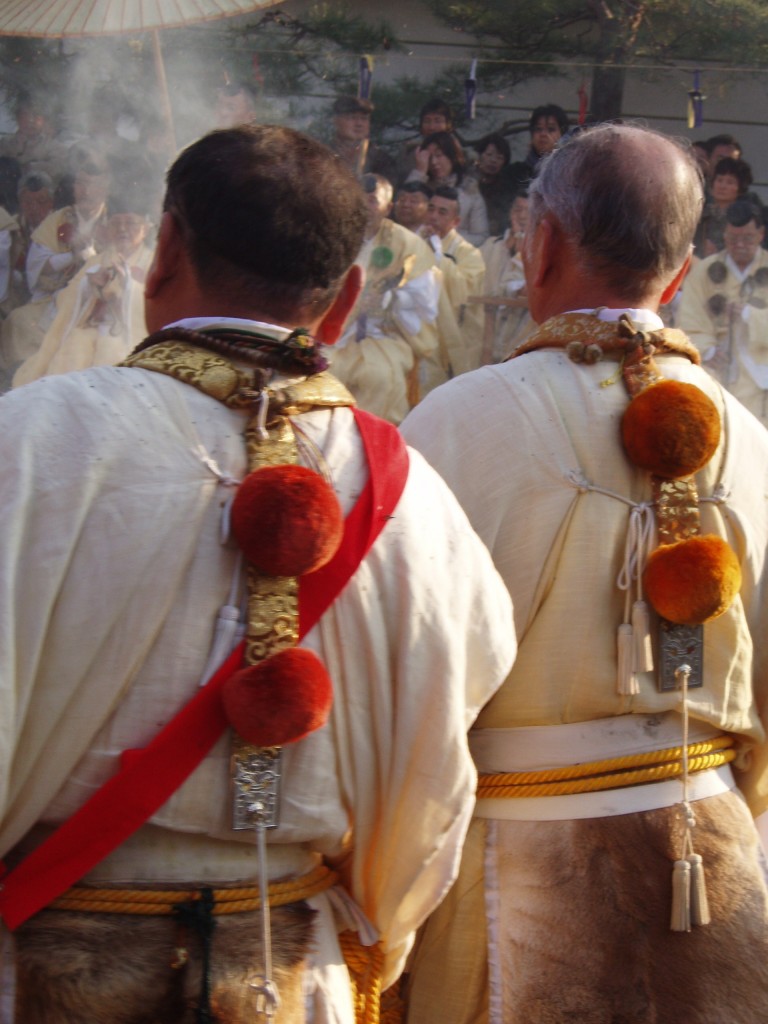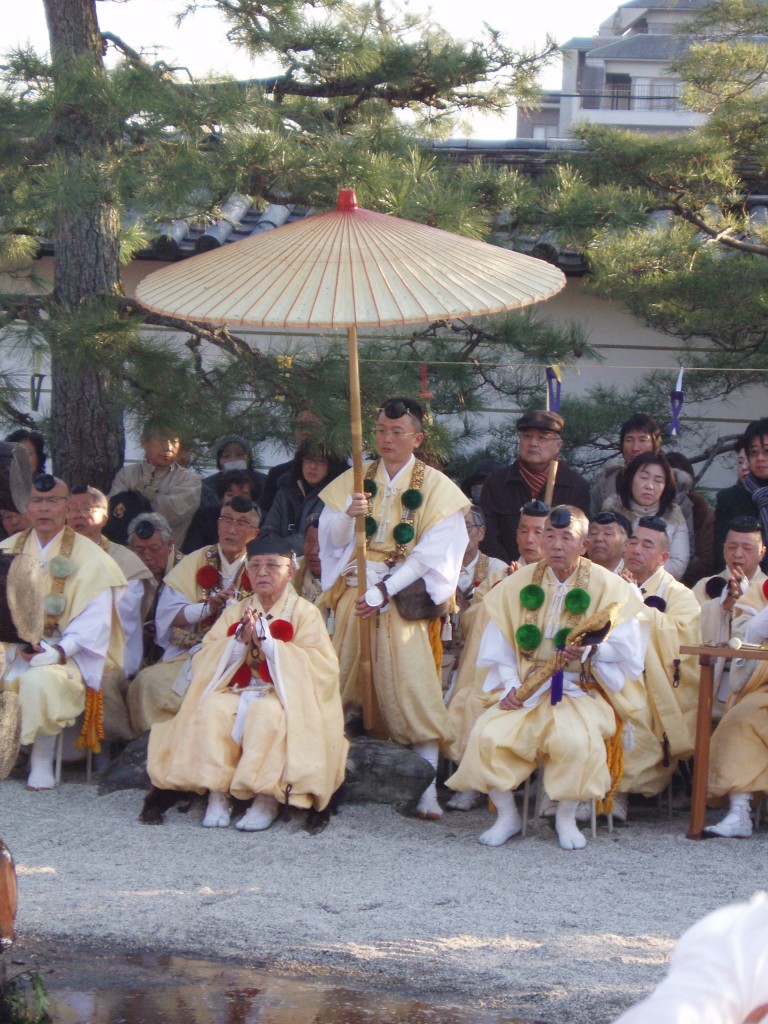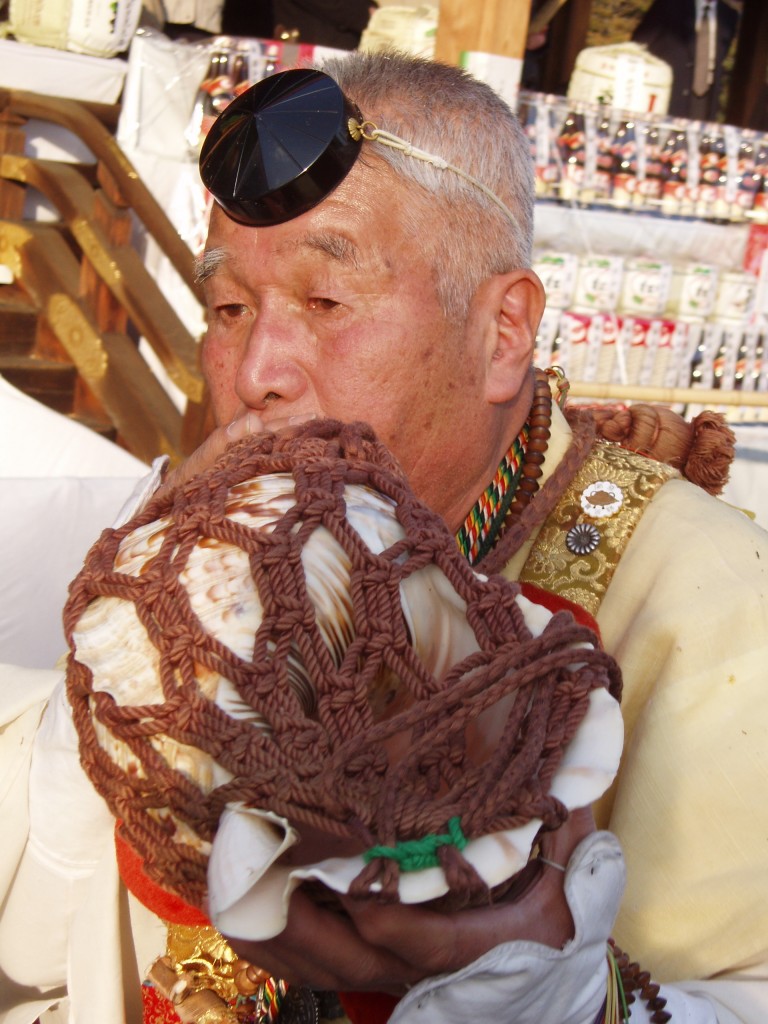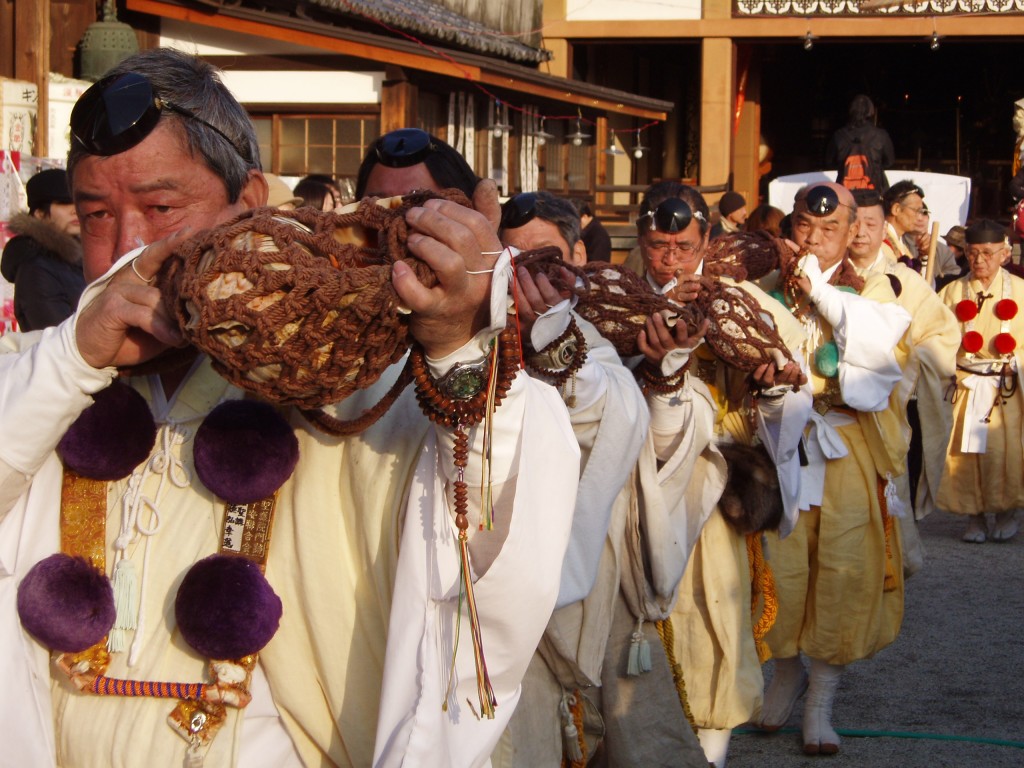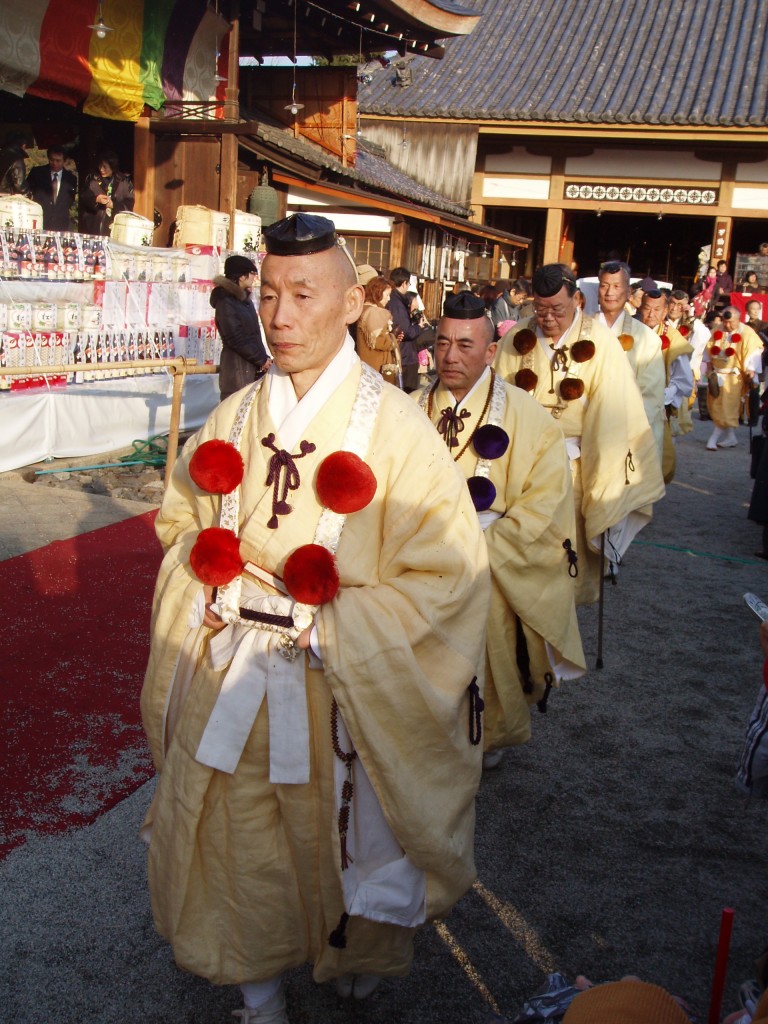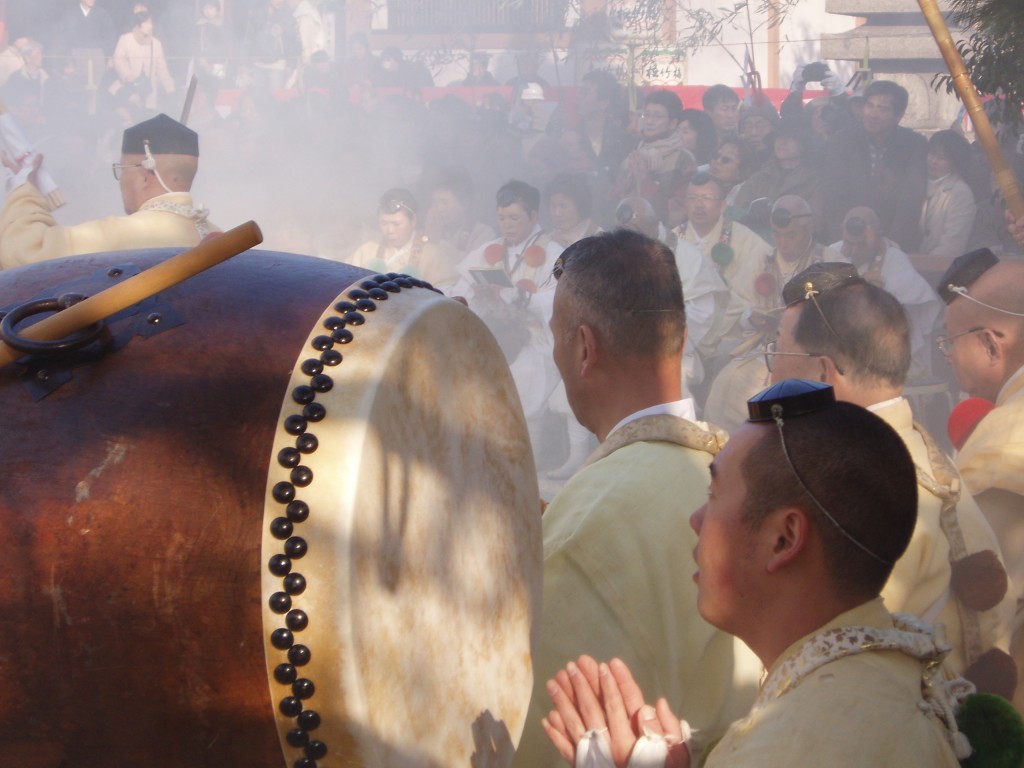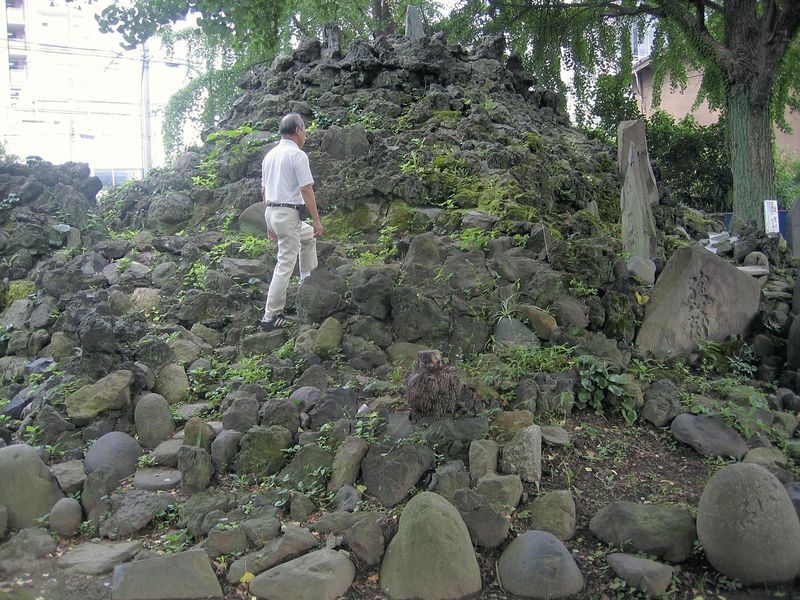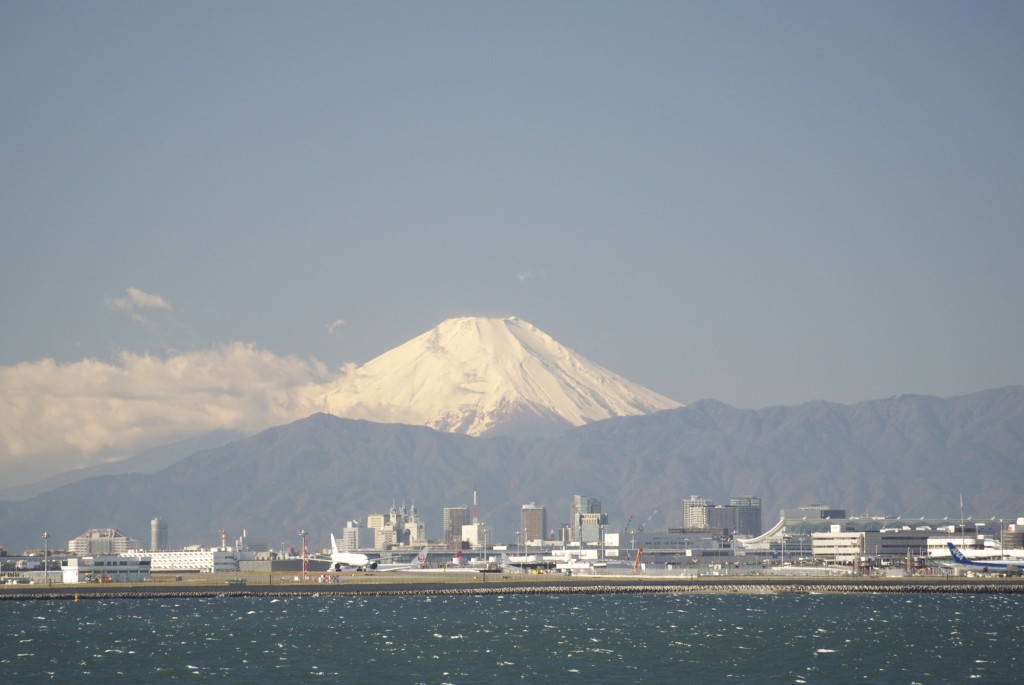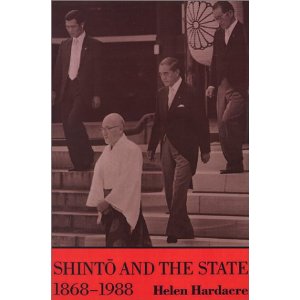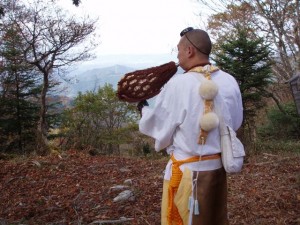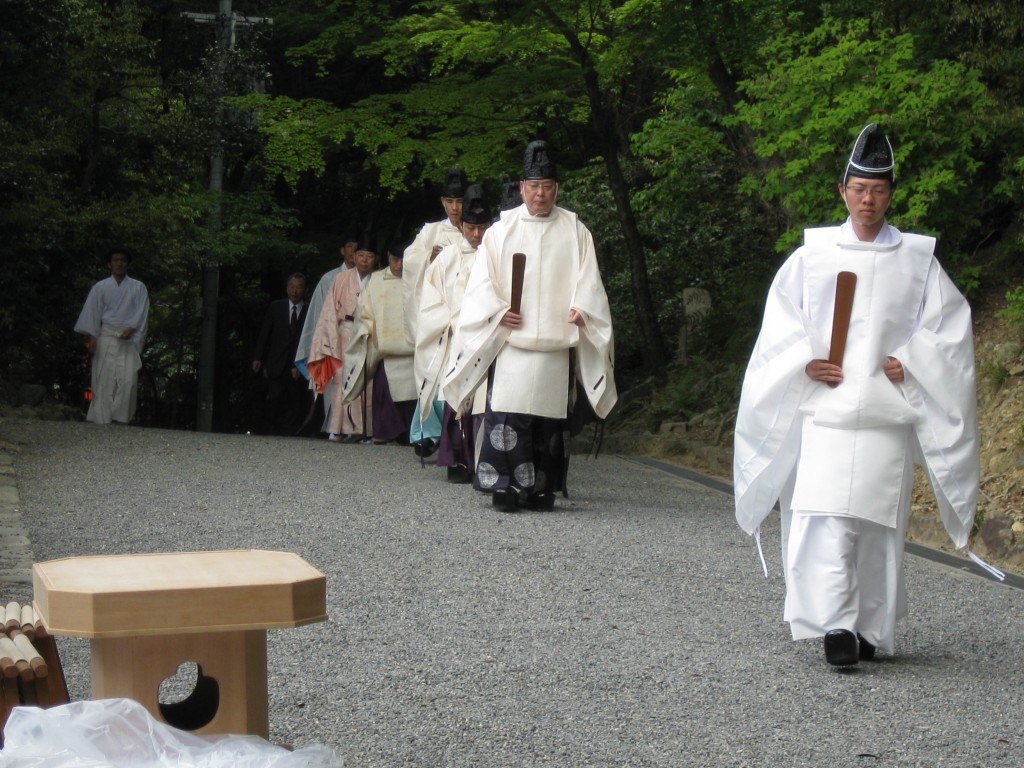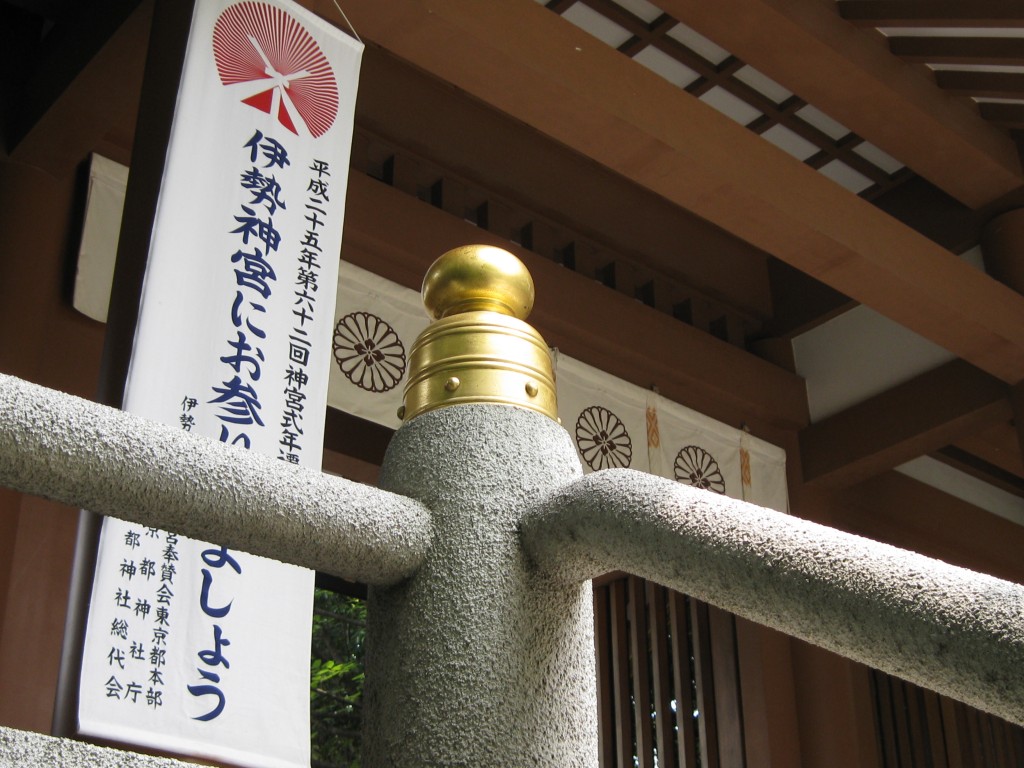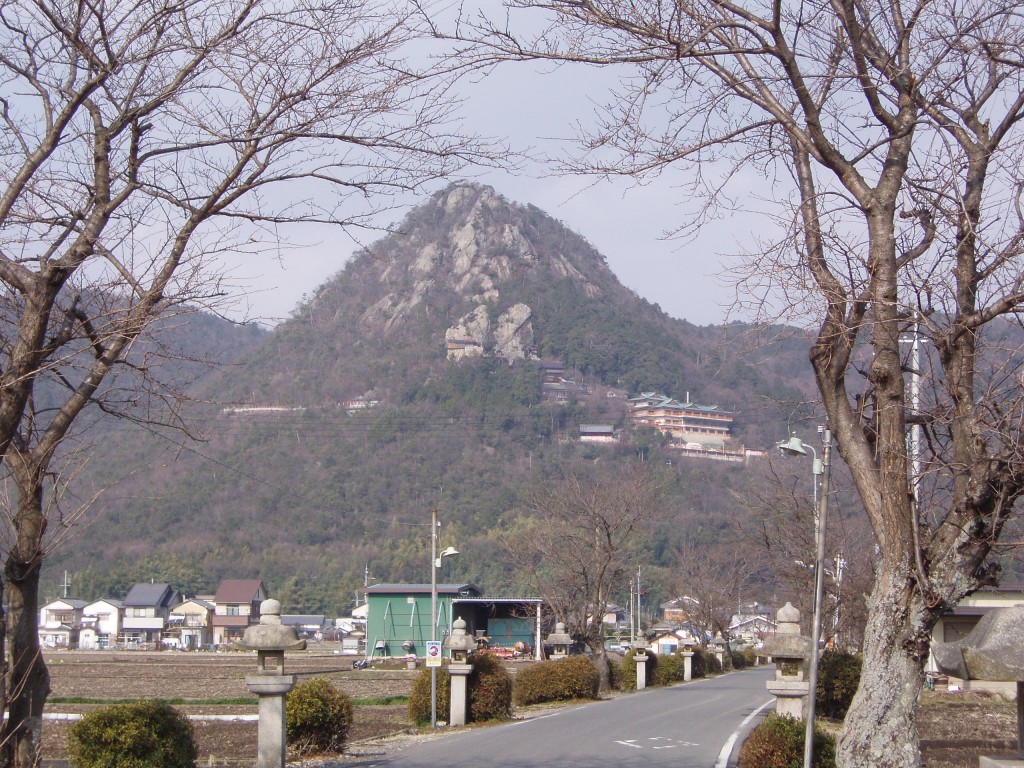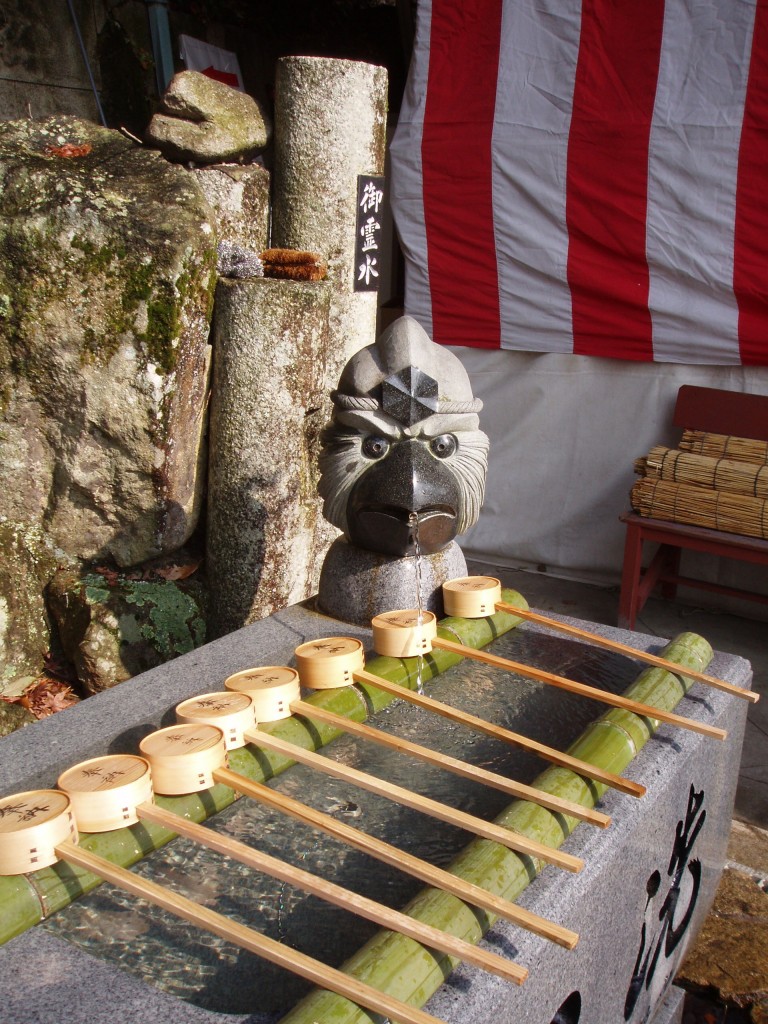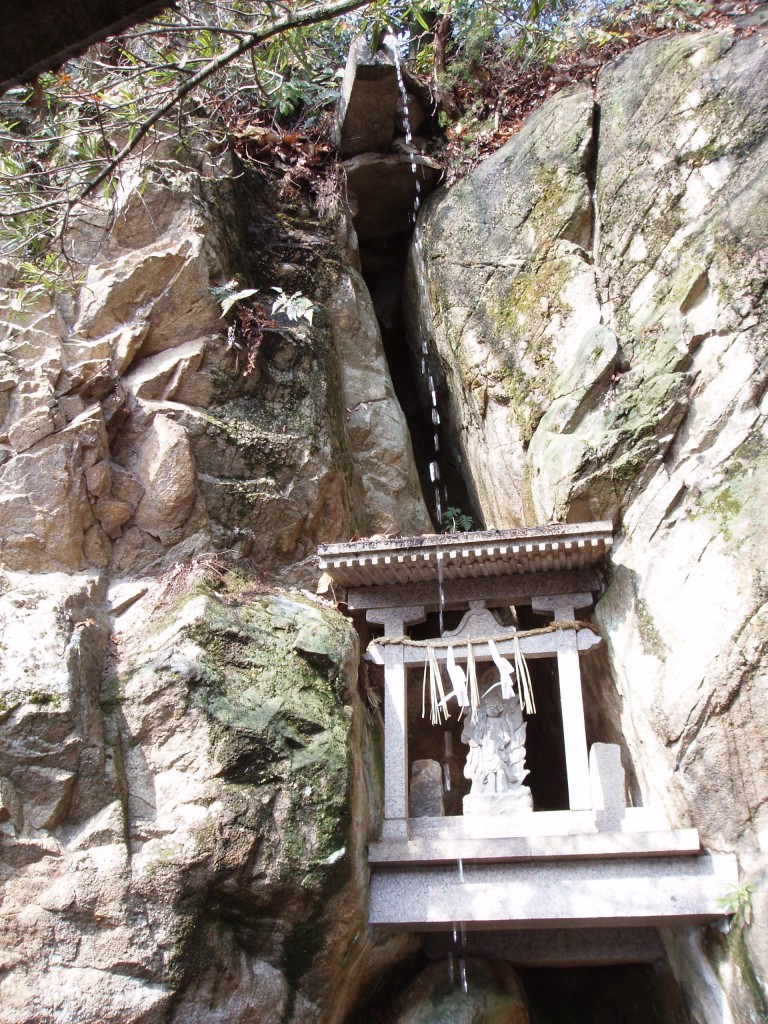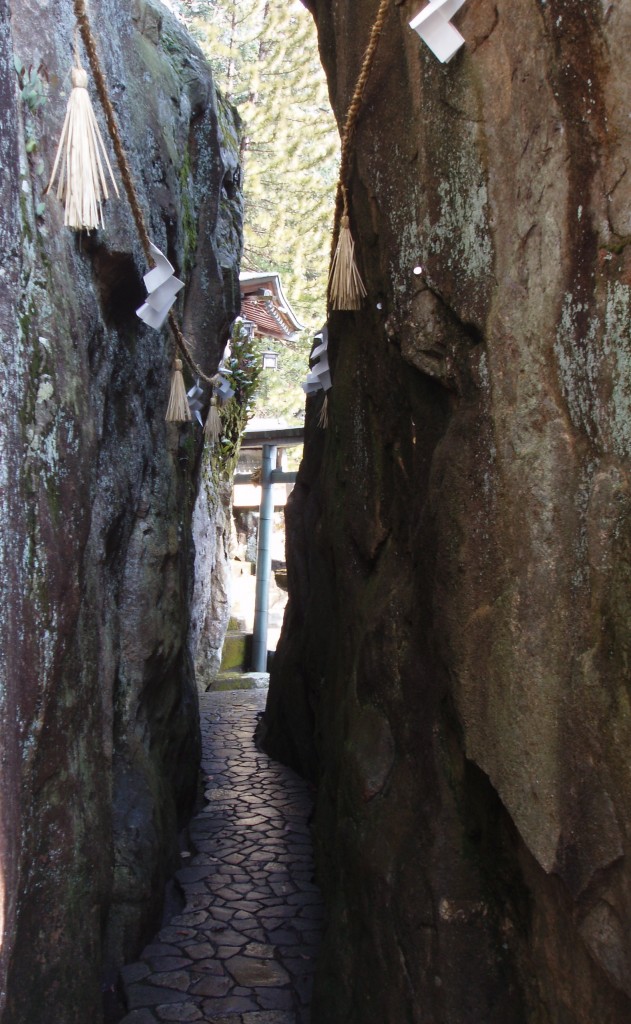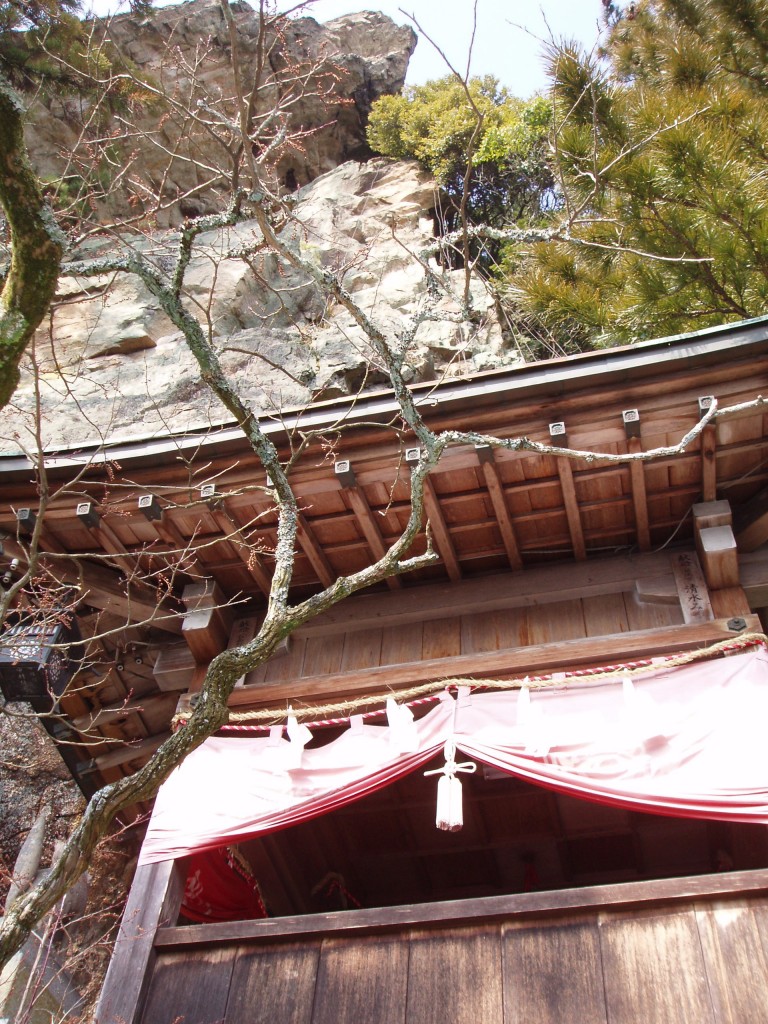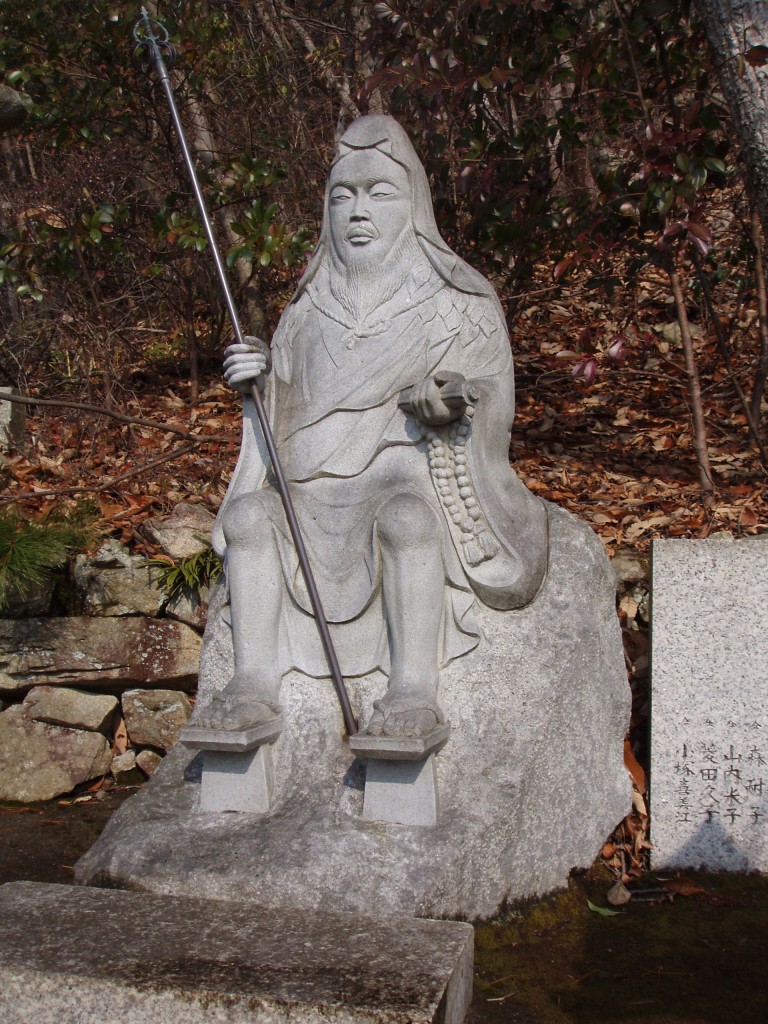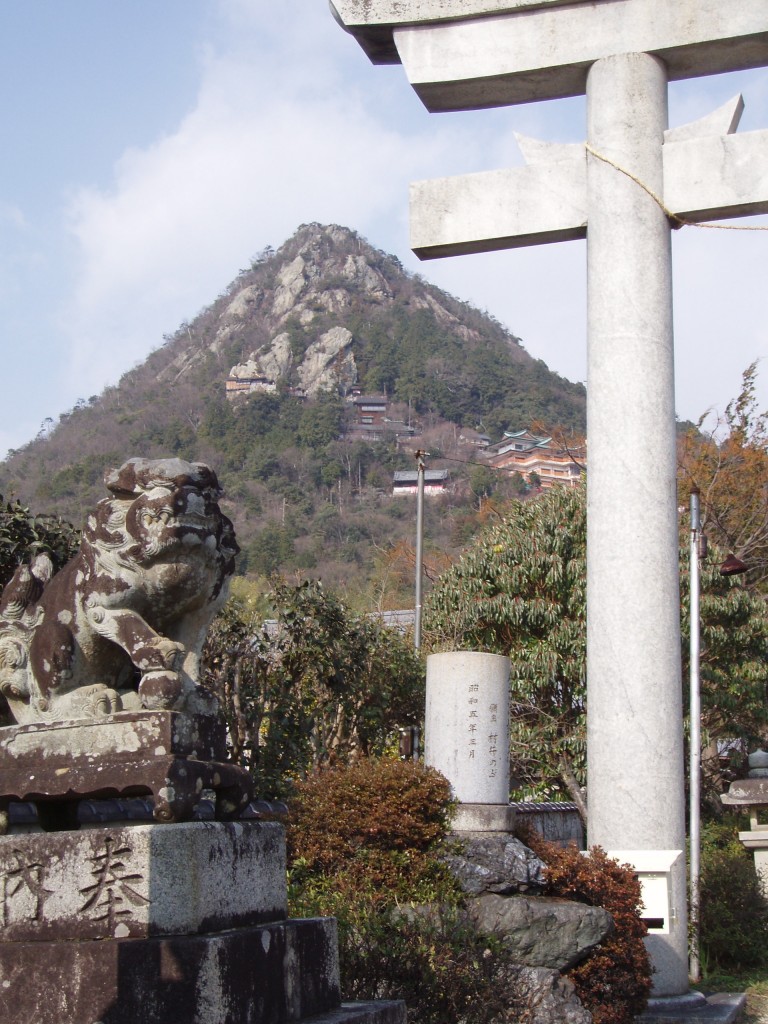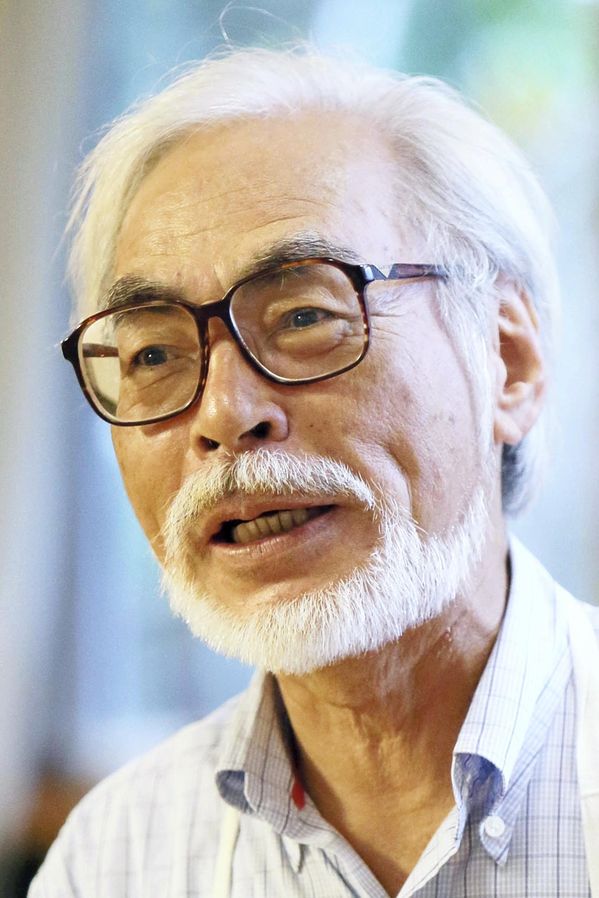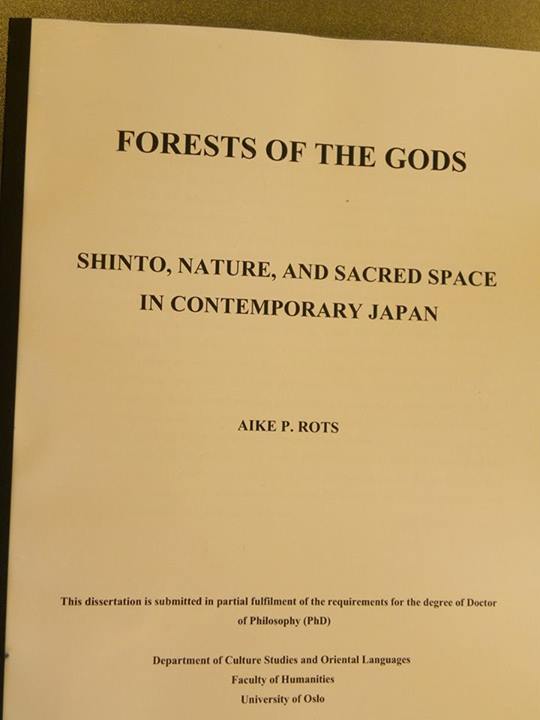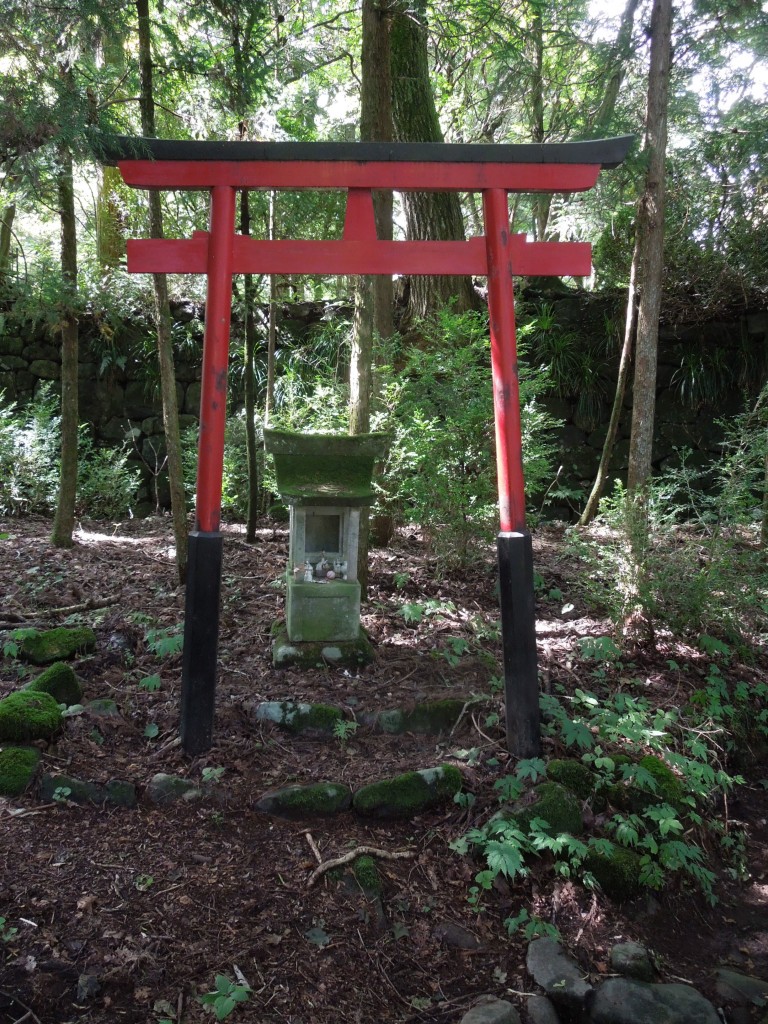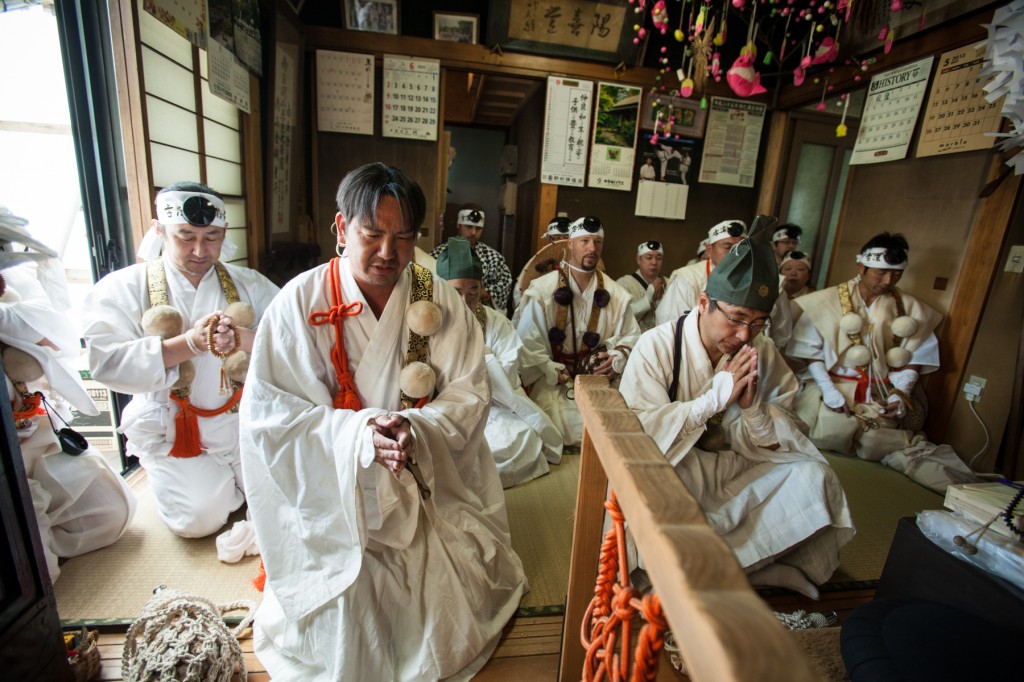
Christian Grübl in the midst of the Koshikidake group with whom he trained
This is the second part of an interview with Christian Grübl, a qualified Yamabushi monk who is introducing Shugendo to Austria. (For the first part, click here.)
Personally, as someone who spent childhood holidays at Wolfgangsee in the Austrian lake district, I’m delighted to learn of the coming of mountain asceticism to the glorious Austrian landscape.
*****************************************************************************
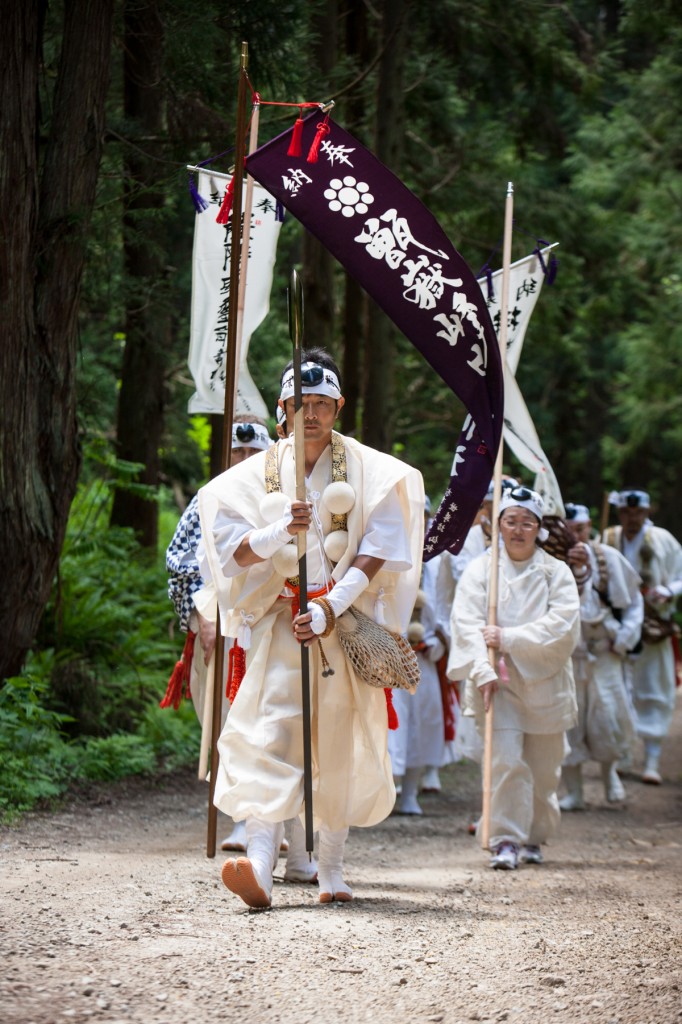
Procession of yamabushi mountain ascetics n full regalia (all photos courtesy Grübl)
4) Could you tell us about the students and what kind of
activities you engage in?
First I have to say, that Soke Koshikidake is the only teacher and grand master of a Shugendo line who allows foreigners to learn and practice Shugendo. It is impossible for non-Japanese to get accepted into one of the three big Shugendo schools. Further there are big differences in methodology and concept of the way of Shugendo in the different schools.
There are a lot of Yamabushi in Japan who only meet once a year to participate in a Mine Iri (‘entering the mountains’). In our school regular practice is very important to grasp the core meaning of the different prayers and to make a connection to the gods.
In Austria I teach what I am able to and have been authorized to: Fudo Myo Rosary Prayer, the Senko Goma fire ritual, the Enno Gyoja prayer, Horagai (conch shell trumpet) and the basics of Shugendo.
5) What changes or modifications have you had to make? What about the language for instance? And what about the kami or deities?
Through my studies I gained a new respect for nature and the universe. I learned that everything comes back to you eventually, be that in a good or bad way. Shugendo is not just a religion consisting of Buddhist and Shintoist teachings, but also a way of life that teaches us to see the true values in life.
Unfortunately I do not speak Japanese, but that is not a problem, since Soke Koshikidake is fluent in English. Reading the Japanese texts does require some practice, but after getting used to it, even that works fine. My teacher translated a lot of the countless old Densho which are family property of the Koshikidake family into English, and therefore it is possible for everyone to grasp and understand the meanings.
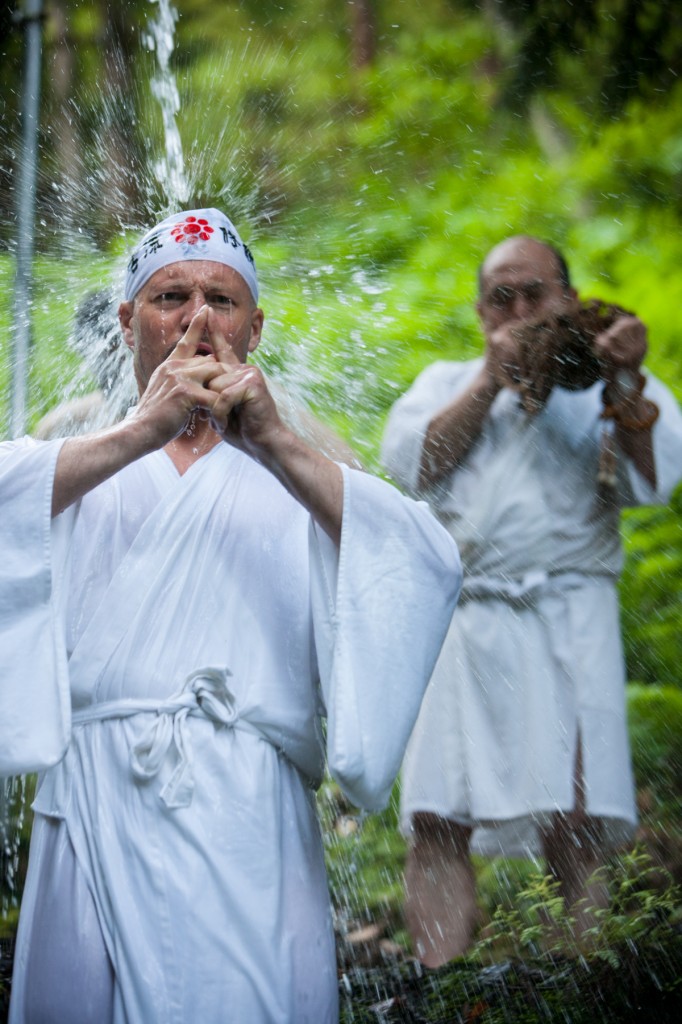
Christian performs cold water rites to a conch-shell accompaniment
We have a myriad of gods (Kami) which we worship. Since Shugendo is a mixture of Vajrayana Buddhism and Shinto, we worship the same gods. Our main god apart from the Nyorai, Bosatsu and Gongen is Fudo Myoo and also the Shinto gods like Izanagi and Izanami no Mikoto.
6) How do you see things developing in future? Do you think that
Shugendo will take root in Europe, much like kendo and aikido etc.?
Soke Koshikidake is working on building a worldwide organization at the moment. In digital times like ours there are a lot of ways to reach interested people.
An all-encompassing Shugendo book by Soke Koshikidake will soon be available, and it will also be available in English and German. In Canada and America Stephen Ip, another one of Soke’s
students, will take care of distribution, and I will do the same in Europe.
Because of the broad spectrum Shugendo covers, it can be interesting and possible to learn for everyone. It is important to make this tradition available worldwide, so that foreigners can also travel to Japan and be part of a ‘mountain entry’.
When we practice Shugendo we try to stay as close to the original practiced in Japan. Even the mountain training is very similar, because we have the same opportunities in the Austrian Alps as we do in Japan. Whether the chance to succeed abroad is higher than for other Asian traditions is not important. The important part is that it is freely accessible and finds its way all around the world as the Koryu tradition.
***************************************************************
For further information about Christian’s activities, visit his websites:
http://www.shugendo-austria.org/
http://www.yamabushi-dojo.org/
*****************************************************************
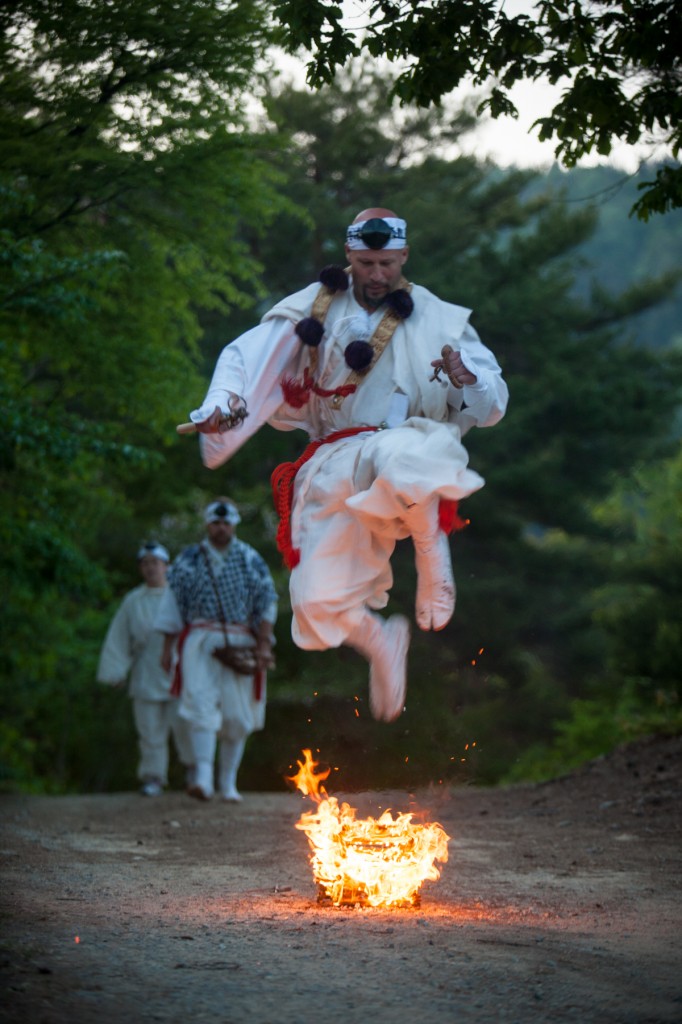
Christian leads the way in one of the fire rites
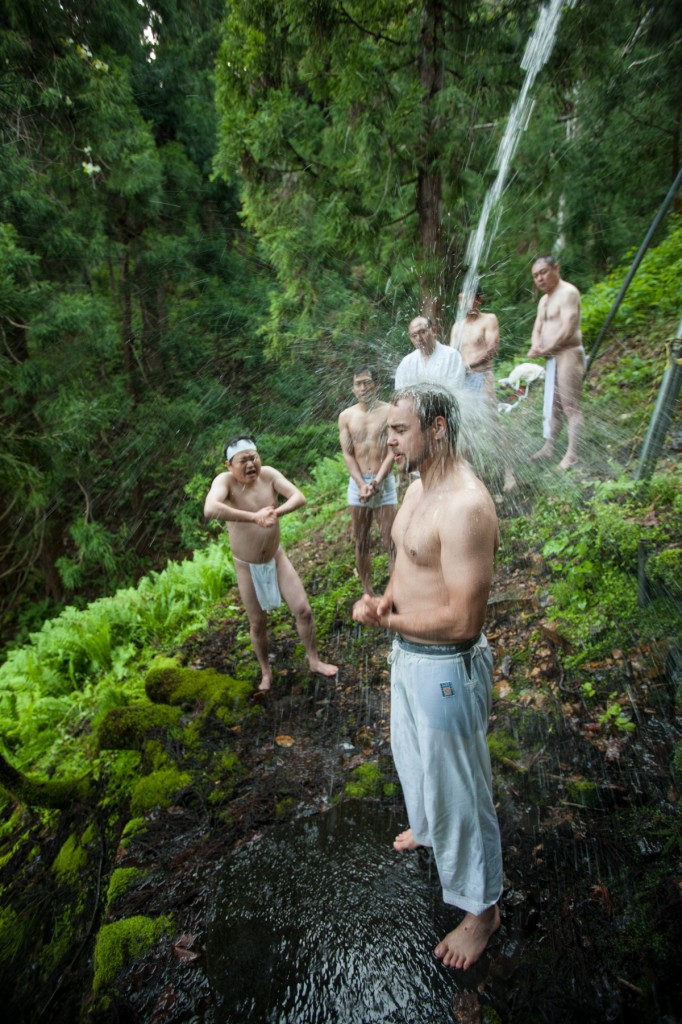
Misogi (cold water rites, an essential part of Shugendo
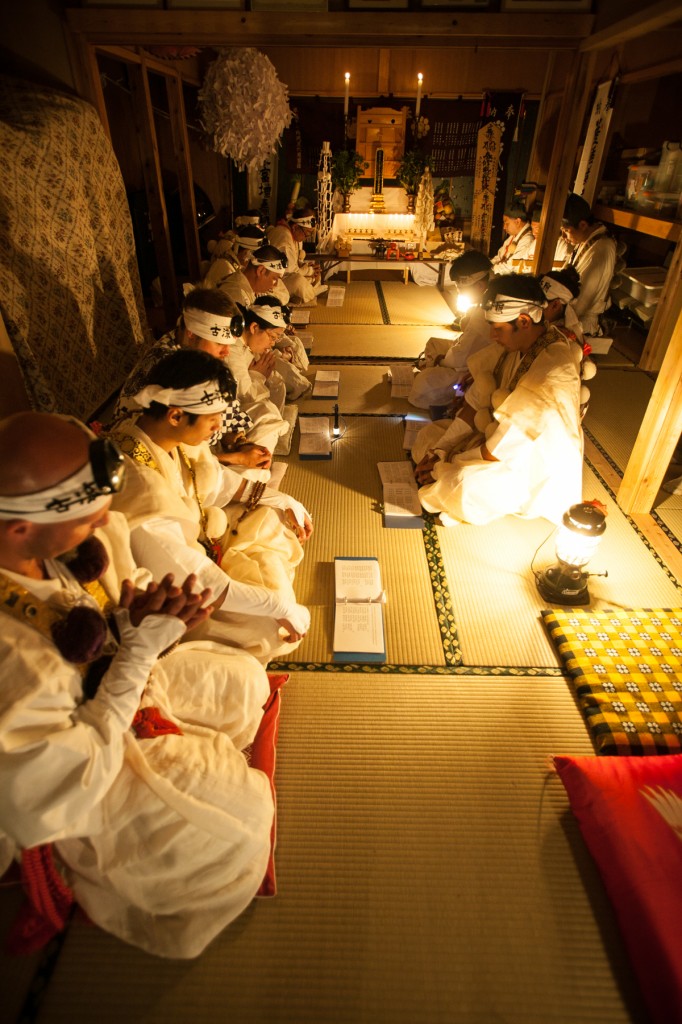
An indoor recital of prayers
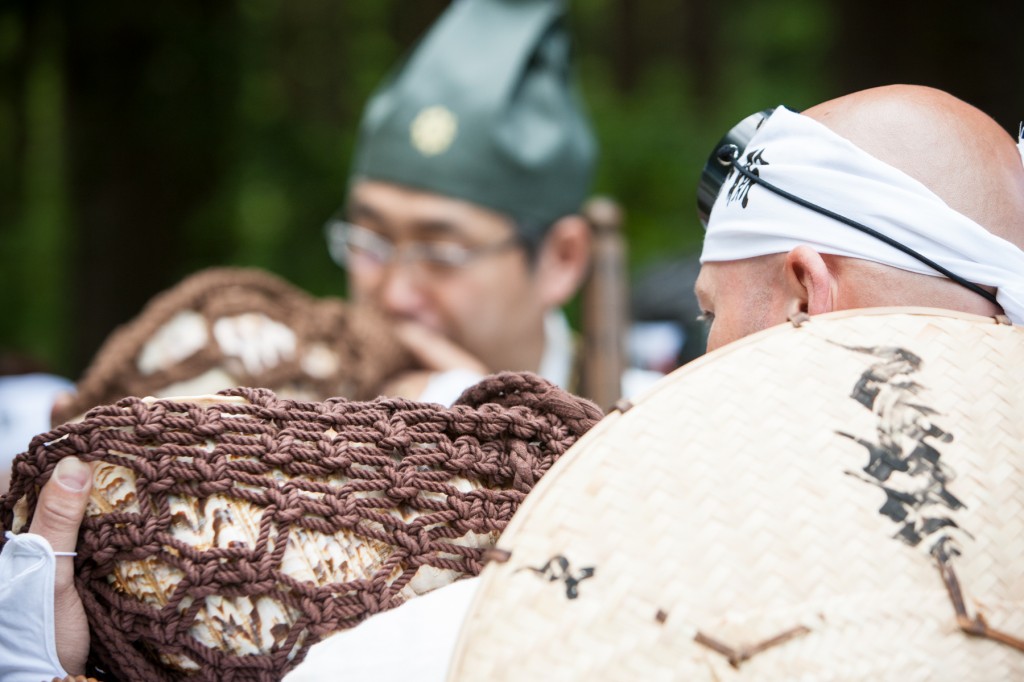
Conch-shell blowing requires good lung power
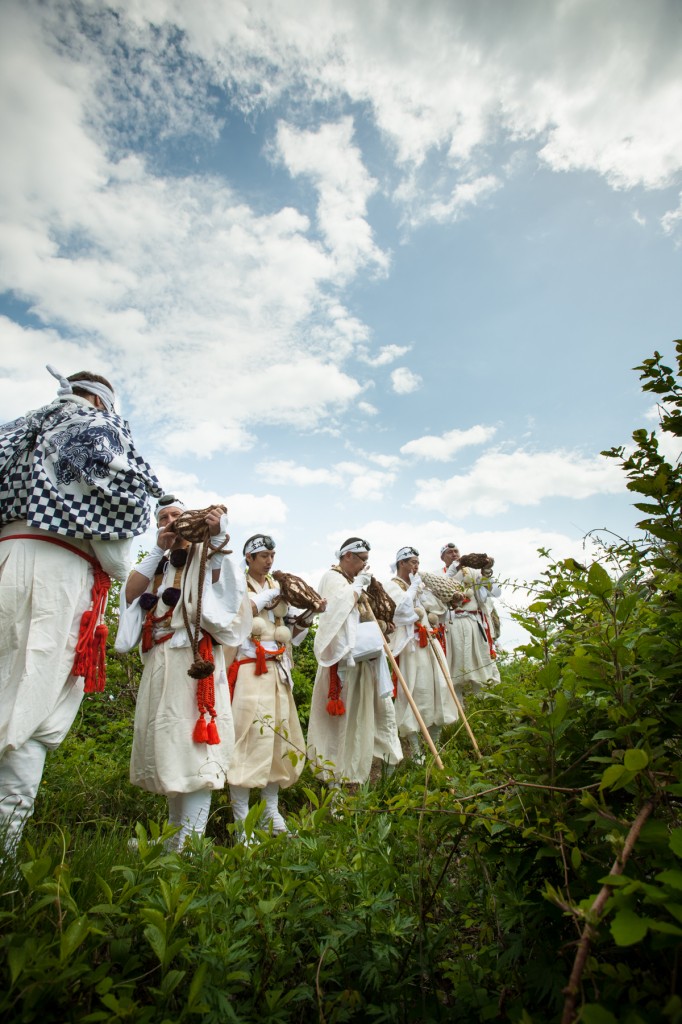
Conch shell practice on Mt Koshikidake in Yamagata Prefecture

